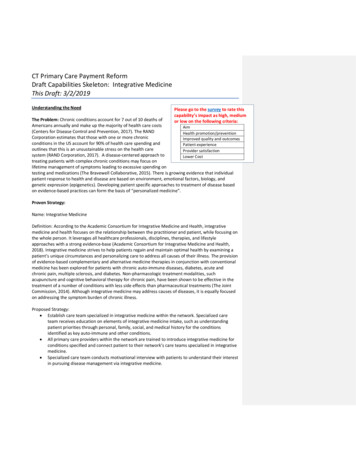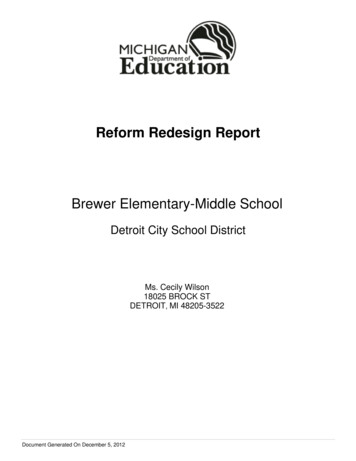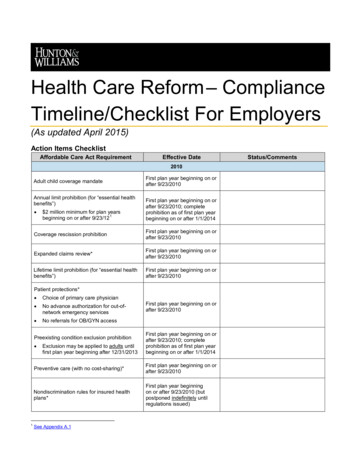
Transcription
Presenting a live 90-minute webinar with interactive Q&AEstate Planning and Tax Reform:Wealth Transfer StructuresUnder the New Tax LawWEDNESDAY, FEBRUARY 7, 20181pm Eastern 12pm Central 11am Mountain 10am PacificToday’s faculty features:James G. Blase, Principal, Blase & Associates, Chesterfield, Mo.Adjunct Professor, Villanova University School of Law Graduate Tax ProgramThe audio portion of the conference may be accessed via the telephone or by using your computer'sspeakers. Please refer to the instructions emailed to registrants for additional information. If youhave any questions, please contact Customer Service at 1-800-926-7926 ext. 1.NOTE: If you are seeking CPE credit, you must listen via your computer — phone listening is nolonger permitted.
Tips for Optimal QualityFOR LIVE EVENT ONLYSound QualityIf you are listening via your computer speakers, please note that the qualityof your sound will vary depending on the speed and quality of your internet connection.If the sound quality is not satisfactory, you may listen via the phone: dial1-866-961-9091 and enter your PIN when prompted. Otherwise, pleasesend us a chat or e-mail sound@straffordpub.com immediately so we can address theproblem.If you dialed in and have any difficulties during the call, press *0 for assistance.NOTE: If you are seeking CPE credit, you must listen via your computer — phonelistening is no longer permitted.Viewing QualityTo maximize your screen, press the F11 key on your keyboard. To exit full screen,press the F11 key again.
Continuing Education CreditsFOR LIVE EVENT ONLYIn order for us to process your continuing education credit, you must confirm yourparticipation in this webinar by completing and submitting the AttendanceAffirmation/Evaluation after the webinar.A link to the Attendance Affirmation/Evaluation will be in the thank you email that youwill receive immediately following the program.For CPE credits, attendees must participate until the end of the Q&A session andrespond to five prompts during the program plus a single verification code. In addition,you must confirm your participation by completing and submitting an AttendanceAffirmation/Evaluation after the webinar.For additional information about continuing education, call us at 1-800-926-7926 ext. 2.
Program MaterialsFOR LIVE EVENT ONLYIf you have not printed the conference materials for this program, pleasecomplete the following steps: Click on the symbol next to “Conference Materials” in the middle of the lefthand column on your screen. Click on the tab labeled “Handouts” that appears, and there you will see aPDF of the slides for today's program. Double click on the PDF and a separate page will open. Print the slides by clicking on the printer icon.
Estate Planning andTax ReformWealth Transfer Structures Underthe New Tax LawJames G. Blase, CPA, JD, LLMSt. Louis, MissouriAdjunct Professor, Villanova UniversitySchool of Law Graduate Tax Program
Use of Trusts in Estate Planning Death tax protection, including stateestate, inheritance and GST taxes. Lawsuit protection. Protection for minors and older childrenand other beneficiaries. Divorce and remarriage protection. Special needs trusts. Second marriage situations.1
Estate Tax Planning Underthe New Tax Law For large estates, need to ensure that each spouse’sestate funded with up to the current 11 millionexemption amount. Remember that relying on the spousal portabilityelection to ensure the “double exemption” for marriedcouples carries with it significant risks. Portability may not be available if surviving spouse remarries.Portability not available to protect future growth.Portability not available for GST tax purposes.Portability may not be available for state death tax purposes.Portability eliminates asset protection.Portability may not make sense in second marriage situations.2
Income Tax and GST PlanningUnder the New Tax Law Trusts with Zero Inclusion Ratio Attorneys preparing new trust instrumentsintended to have a GST tax inclusion ratio ofzero, which will now include most bypass orcredit shelter trusts and most trusts forchildren or more remote descendants, mustnow also consider the ever increasinglikelihood that the estate of the primarybeneficiary of the trust won’t be subject tofederal estate tax.3
Trusts with Zero Inclusion Ratio Given the fact that most states no longerimpose an estate or inheritance tax, as well asthe ever-widening gap between federal andstate transfer tax exemptions in those statesthat do impose either or both taxes, a renewedemphasis on the income tax aspects of estateplanning, and specifically income tax basisplanning, is needed if trusts are still desirable.4
Trusts with Zero Inclusion Ratio Achieving new income tax basis if a beneficiaryof a zero inclusion ratio trust should die duringthe term of the trust involves granting thebeneficiary a conditional testamentary generalpower of appointment (POA) (typically limitedto the creditors of the beneficiary’s estate) overthe trust assets, to the extent the same won’tresult in any federal or state estate orinheritance tax liability to the beneficiary’sestate.5
Trusts with Zero Inclusion Ratio An exception to this automatic rule shouldapply when the beneficiary is survived by aspouse, however, to preserve the fullavailability of the federal spousal portabilityelection, when desirable. Instead of using an automatic testamentary generalPOA, during the beneficiary’s lifetime anindependent trustee can be granted thediscretionary ability to add the power, to the extentit’s deemed beneficial, as well as the discretionaryability to remove it.6
Trusts with Zero Inclusion Ratio If an individual is a beneficiary of morethan one trust, the conditionaltestamentary general POA should beallocated among the relevant trusts,based on the fair market value of therespective trust assets at thebeneficiary’s death.7
Trusts with Zero Inclusion Ratio It’s important to fashion the testamentarygeneral POA in a manner that applies to themost appreciated assets of the trust first, towipe out the most potential capital gains taxpossible in the event a testamentary generalPOA over the entire trust would generateestate or inheritance taxes. It may also be advisable to structure thetestamentary general POA so that it doesn’tapply to any trust assets that have depreciatedin value over their historical income tax basis.8
Trusts with Zero Inclusion Ratio The conditional testamentary generalPOA should also contain limitations thatwill eliminate the possibility that thebeneficiary’s estate or the trust will beautomatically subject to income tax onany gain attributable to any portion of theremaining trust assets (should such a lawever pass).9
Trusts with Zero Inclusion Ratio With the ever-increasing prospect of some dayhaving a nation with no federal (at least) estatetax, or at least a change in the Section 1014rules to eliminate GPAs as a basis step-uptriggering event, it may be wise for the draftingattorney to also assume in his drafting that themere existence of a testamentary conditionalgeneral POA (especially one that’s limited tocreditors of the beneficiary’s estate) may nolonger be sufficient to create income tax basisstep-up under Section 1014.10
Trusts with Zero Inclusion Ratio Another alternative in zero inclusion ratiosituations may be to grant the beneficiarya testamentary limited POA over the trustassets, and then allow the beneficiary tointentionally violate IRC Section2041(a)(3) (the so-called “Delaware taxtrap”), to the extent it won’t cause estateor inheritance taxes to be payable at thebeneficiary’s death.11
Trusts with Inclusion RatioOther Than Zero The general concept in these situations is that,due to the ever increasing likelihood that theestate of one or more beneficiaries of a trustwith other than a zero inclusion ratio won’t besubject to federal estate tax, coupled with thefact that there was no lessening of the federalGST tax rate on non-exempt trusts, the trustdocument should include a testamentaryconditional general POA clause thatautomatically kicks in when there wouldotherwise be a taxable GST.12
Trusts with Inclusion RatioOther Than Zero It’s important that these automatic clauses notignore the fact that state estate, inheritanceand transfer taxes still exist in 15 states plusD.C., however, oftentimes at much lowerexemption levels than the new federal estateand GST tax exemption level. And remember that just because the clients’children all currently reside in a state that doesn’timpose a state transfer tax, doesn’t mean one ormore of the children may not eventually move toone of the 15 states plus D.C. that currently doesimpose one or more transfer taxes on its residents.13
Trusts with Inclusion RatioOther Than Zero The drafting attorney may consider aformula that provides simply that thebeneficiary will possess the testamentarygeneral POA described above only to theextent aggregate federal and stateestate, inheritance, GST and othertransfer taxes applicable to the trustassets are lowered at the beneficiary’sdeath.14
Trusts with Inclusion RatioOther Than Zero The POA should begin with the trust asset or assetshaving the lowest amount of built-in appreciation(calculated by subtracting the trust's income tax basisfrom the fair market value on the date of death of suchperson), as a percentage of the fair market value ofsuch asset or assets on the date of death of suchperson. This protects against the situation should Congress decide toimpose carryover income tax basis on assets not included ingrandfathered trusts. Formula should also conservatively assume that no alternatevaluation date elections are made, there are no deductibleadministration expenses, and there are no qualifieddisclaimers.15
Trusts with Inclusion RatioOther Than Zero The formula limitation on the testamentary generalPOA should not apply if the aggregate transfer taxliability is the same regardless of the beneficiary’spossession of the POA. This will have the beneficial effect of pushing the taxable GSTdown a generation or possibly even eliminating the taxabletransfer entirely, and it could bring the previously taxedproperty credit under IRC Section 2013 into play. However, in this “transfer tax neutral” situation the sameconditions discussed above for zero inclusion ratio trusts,relative to avoiding potential built-in gains taxes, etc., shouldbe imposed.16
Trusts with Inclusion RatioOther Than Zero Unless an independent trustee should provideotherwise during the lifetime of the beneficiary,the non-GST-exempt trust drafting shouldassume that, if the beneficiary is survived by aspouse, federal and state qualified terminableinterest property elections are made only to theextent necessary to minimize federal and stateestate and inheritance taxes at thebeneficiary’s death.17
Trusts with Inclusion RatioOther Than Zero In the event no tax is imposed on theGST (for example, because the federaland any applicable state GST taxes arerepealed), then the above-describedrules for zero inclusion ratio trusts shouldapply to again achieve the maximumincome tax basis possible at thebeneficiary’s death.18
Planning for Existing IrrevocableTrusts Many clients are beneficiaries of existingirrevocable trusts that may not include one ormore of the above-described provisions. Inthese situations, if the governing law of thetrust is that of a state that has passed“decanting trust” legislation, it may be possible,depending on how the trust and the state’sparticular decanting trust statute each read, toprepare a new irrevocable trust that will includeone or more of the above-described provisionsand then transfer the assets from the existingirrevocable trust to the “decanting trust.”19
Planning for Existing IrrevocableTrusts The problem will be ensuring that theparticular trust document and decanting truststatute permit the contemplated transfer. In Missouri, for example, it is doubtful thatthe state’s decanting legislation would allowthe addition of a conditional GPA to thecreditors of the beneficiary’s estate, sincethese creditors would likely be consideredcontingent beneficiaries of Trust 2 who werenot also beneficiaries of Trust 1.20
Planning for Existing IrrevocableTrusts Another potential route for achieving theabove-described income tax benefits for anexisting irrevocable trust may arise if theexisting trust instrument includes a “trustprotector” clause. Depending on how theparticular clause is crafted, it may includewithin its scope permissible amendments to thetrust to achieve income tax advantages for thetrust and its beneficiaries.21
Planning for Existing IrrevocableTrusts Some states may also have “trustmodification” statutes that permitrevisions to irrevocable trust documentsunder specified circumstances, with orwithout court approval, includingrevisions to achieve tax advantages.22
Planning for Existing IrrevocableTrusts An estate-planning attorney must also bemindful of all the potential transfer tax issuesthat may attend transferring trust assets to adecanting trust, exercising a trust protectorpower or otherwise participating in amodification of an irrevocable trust. These potential transfer tax issues include GST taxissues involving grandfathered and other currentlyexempt trusts, as well as other estate and gift taxquestions. It should be possible to navigate thesepotential transfer tax issues in most situations,however, through careful analysis and planning.23
Planning for Existing IrrevocableTrusts If the existing irrevocable trust happens to include atestamentary limited POA in the beneficiary, a final toolthe beneficiary may have at his disposal is to follow theplan already outlined above of intentionally violatingSection 2041(a)(3), at least to the extent of the mostappreciated assets of the trust, but without increasingestate or inheritance taxes payable at the beneficiary’sdeath. For this planning technique to succeed, however, it must firstbe determined that the strategy isn’t already foreclosed by theprovisions of the applicable trust document or by applicablestate law.24
Planning for Existing IrrevocableTrusts Any change to an existing irrevocable trustarrangement must account for the fact thatexemption amounts can change in the future(for the good or for the bad) and/or there couldbe changes to the income tax laws at death,e.g., carryover income tax basis or income taxon built-in gains. There are also the above-described state estate andinheritances tax issues to consider. Thus, simply terminating an irrevocable trust willoftentimes not be the wisest course, as compared to“amending” the existing trust document.25
Clawback under the New TaxLaw As recently as a little over five years ago, estateplanners were facing the issue of how the InternalRevenue Service would handle the situation if, say,their client made a gift of 5 million under the availablegift tax exemption at the time, but the amount exemptfrom estate tax reverted to some lesser number prior tothe client’s death. Simply put, the issue was whether the Internal Revenue CodeSection 2001(b)(2) offset for gift taxes payable would use theestate and gift tax exemption amount applicable at the time ofthe gift or at the time of the client’s death. If the former wasused, the client effectively hadn’t taken full advantage of thelarger lifetime gift tax exemption.26
Clawback under the New TaxLaw Congress has now chosen to leave the different basicexclusion amount issue up the IRS to decide. New section 2001(g)(2) directs the Secretary to prescriberegulations “necessary or appropriate” to carry out “thissection” with respect to any difference between the basicexclusion amount in effect at the time of any gifts made by thedecedent and at the donor’s death. The Conference Committee Report inserts the words “thepurposes of” after the words “carry out” in the introductoryclause of section 2001(g)(2).27
Clawback under the New TaxLaw Although the Conference Report does notelaborate on the “purposes of” section 2001,one rather obvious purpose of Section 2001 isto not tax the same donative transfer twice. Section 2001(a) provides that “[a] tax is herebyimposed on the transfer of the taxable estate ofevery decedent who is a citizen or resident of theUnited States.” In order for an asset to comprise a portion of adecedent’s taxable estate, it must first comprise aportion of his gross estate, and lifetime giftsgenerally do not. IRC Section 2051.28
Clawback under the New TaxLaw If the higher gift tax exemption amount in effect at thetime of the lifetime donative transfers, as opposed tothe lower exemption amount in effect at the time of thedecedent’s death, is used in the section 2001(b)(2)offset computation, then the lifetime donative transfersare effectively being taxed under Section 2001. Utilizing the higher gift tax exemption amount in effectat the time of the transfers would therefore not carryout the primary purpose of IRC Section 2001 to taxonly assets comprising a portion of the decedent’s“taxable estate.”29
Clawback under the New TaxLaw If, under this limited Congressional grant ofauthority, the IRS nevertheless issuesregulations which utilize the exemption amountin effect at the time of the gift for purposes ofdetermining the Section 2001(b)(2) offsetamount, the problem is that significant estatetaxes attributable to a gift in excess of 5.5million could result - an “excess” gift which thedonor may have reasonably assumed would begrandfathered despite the sunset clause.30
Clawback under the New TaxLaw If, on the other hand, the IRS opts toutilize the gift tax exemption in effect atthe time of the donor’s death for section2001(b)(2) offset purposes, lifetime giftsin excess of 5.5 million will yield anestate tax benefit while lifetime gifts of 5.5 million or less will not, which seemsinequitable.31
Clawback under the New TaxLaw The above two examples illustrate whyCongress most likely chose to direct theIRS to issue “appropriate and necessary”regulations to carry out Section 2001,rather than attempt to grapple thecompeting issues itself.32
Clawback under the New TaxLaw Thus, though we obviously cannot predictwith certainty exactly how the IRS willhandle the clawback situation, we doknow that, should the IRS’ regulationsnot recognize the primary purpose ofSection 2001, as outlined above, itsregulations would be subject to multiplechallenges for overreaching.33
Clawback under the New TaxLaw What this all means is that there could be ahuge advantage to making lifetime gifts inexcess of 5.5 million if sunset does takeplace, since in all likelihood any regulationwhich does not give dollar-for-dollar credit forthe excess gift amount would be viewed as aninvalid act of overreaching by the Service. In a worst case scenario, at least all post-giftappreciation is removed from the decedent’s estate. There is an obvious additional tax benefit in stateswhich impose an estate or inheritance tax but whichdo not effectively impose a tax on lifetime transfers.34
the New Tax Law James G. Blase, CPA, JD, LLM . Villanova University School of Law Graduate Tax Program . Use of Trusts in Estate Planning Death tax protection, including state estate, inheritance and GST taxes. Law
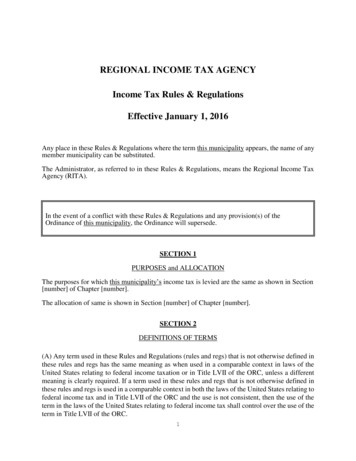
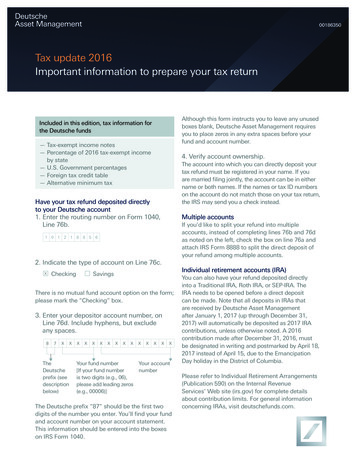
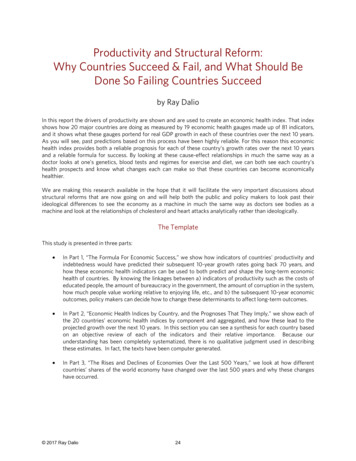
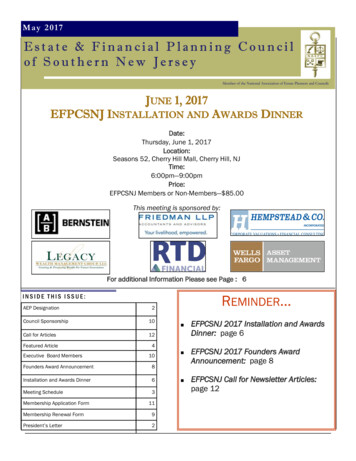
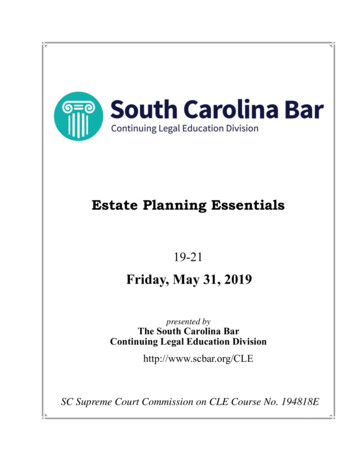
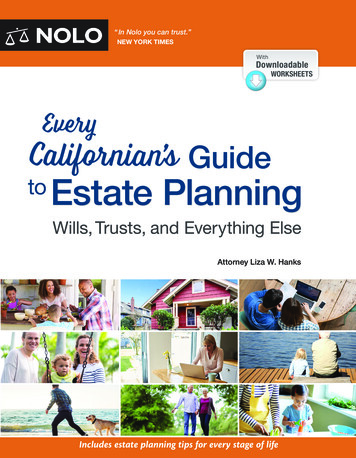
![Financial Services Regulatory Reform (00C) [Read-Only]](/img/2/2018-03-29-davis-polk-financial-services-regulatory-reform-tool-march-2018.jpg)


